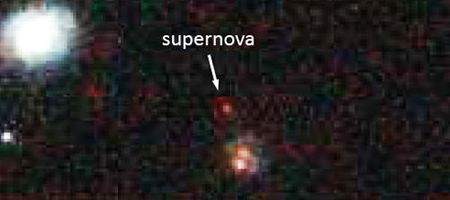Mingus – or more formally, SN SCP-0401 – is a Type Ia supernova with a redshift of 1.71, dating back 10 billion years. It’s exceptional for its detailed spectrum and precision color measurement, unprecedented in a supernova so distant, says the team.

“This is the most distant supernova anyone has ever found for doing dependable cosmology,” says David Rubin of the US Department of Energy’s Lawrence Berkeley National Laboratory.
“The most important unanswered question we have about the nature of dark energy is whether it varies over time – whether it affects the expansion of the universe differently in different eras. With SN SCP-0401, we have the first example of a well-measured supernova sufficiently far away to study the expansion history of the universe from almost 10 billion years ago.”
While not identical, Type Ia supernovae are more similar in brightness than any other type of supernova, and their variability can be accurately corrected for comparison.
This makes them excellent ‘standard candles’ for measuring cosmic distances – the dimmer they appear, the farther away they are. At the same time, their redshift is a direct gauge of how much the universe has expanded since they exploded.
Measuring the history of expansion ultimately depends on comparing distance and redshift for enough Type Ia’s over a long expanse of time – and this is how accelerating expansion, propelled by dark energy, was first found.
Observations of SCP-0401 should help sharpen measurements of dark energy’s possible time variation – although scientists will need observations of many more Type Ia supernovae just as far away as SCP-0401.
“Hubble is our best bet to find and measure similar distant supernovae,” says Rubin. “Luckily Hubble has a few good years left.”






